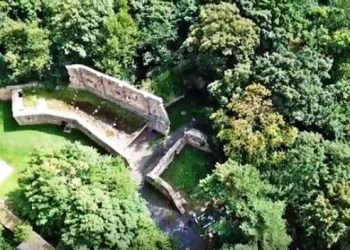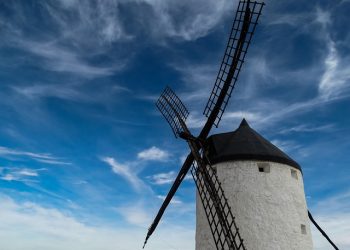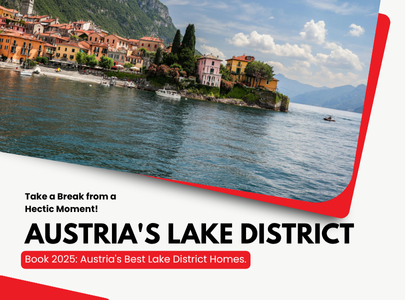In this article, you can read about the city of Eisenstadt and the impressive Esterhazy Palace.
- The City of Eisenstadt – The Iron City
- The Jewish Community – One of the 7 Communities of Burgenland
- Esterhazy Palace
- What can you do at Esterhazy Palace?
- Purchase tickets online for fast-track entry to Esterhazy Palace
Eisenstadt – The Iron City
The city of Eisenstadt and Esterhazy Palace are located south of Vienna, about 12 kilometers from the border with Hungary. The city currently has about 15,000 inhabitants. It is an ancient and small city that was founded back in the Iron Age (in the 8th century BC). The city got its name because this area was rich in iron, and this metal was mined and traded here in ancient times. During the Hungarian rule over the city, it was called Kismarton.
Eisenstadt is on the way from Hungary to Vienna. In times of peace, this location is certainly ideal, but during periods of war, the city suffered from invasions and destruction.
Throughout history, the city was conquered and destroyed several times by the Austrian army, the Mongols, the Turks, and by Napoleon’s army. In addition, over the years, large and significant fires broke out in the city, destroying many parts of it. As if that were not enough, during World War II, the city was heavily bombed by Allied forces and was finally occupied by the Soviet army, which remained in control until 1955.
The city’s prosperity began in 1649 when it came into the hands of the Hungarian Esterhazy family. Thanks to them, the city received its current appearance. The Hungarian princes of the House of Esterhazy developed the city and built impressive buildings in it (they especially invested in their palace). During their time, the great composer Joseph Haydn lived in the city, appointed as the chief conductor of the royal orchestra that played at the prestigious events of the Hungarian princes. To this day, Haydn’s tomb is in the Bergkirche (Mountain Church) in the city.
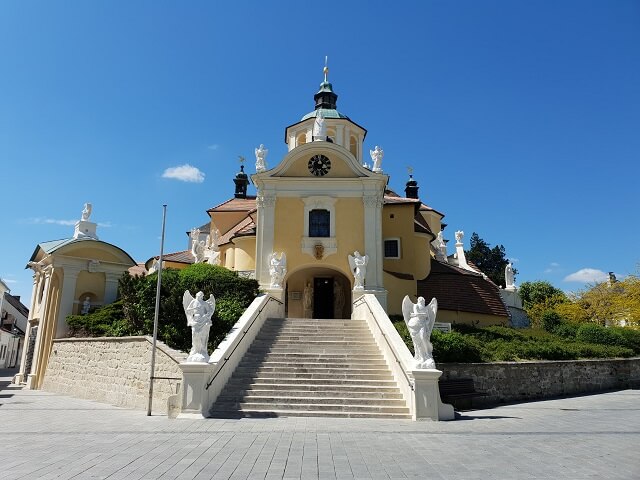
The Jewish Community of Eisenstadt – One of the 7 Communities of Burgenland
In Burgenland, the Jews received protection from the rulers, and thanks to this, Jewish life flourished in this region. Many Jewish communities were scattered throughout the state, and there were important religious centers. Today, the communities of Burgenland are known by the collective name – the 7 Communities (Siebengemeinden).
The Jewish community of Eisenstadt was one of the oldest in Hungary. As early as 1296, Jews lived there and received protection and the opportunity to live. When the Jews were expelled from Vienna, they found refuge in Eisenstadt and contributed to the city’s development. Before World War II, 462 Jews lived in the city. During the war, the Jews of Eisenstadt, along with the Jews of the other communities in Burgenland, were deported to the extermination camps. Most of these communities were completely destroyed in the Holocaust, and today only a few Jews live in all of Burgenland.
In the city, there is a Jewish museum that presents the history of Austrian Jewry (Österreichisches Jüdisches Museum). The museum is located in an ancient synagogue and displays objects and writings related to the Jewish communities in Burgenland and the surrounding area. The museum is open to visitors from May to October (Sunday to Thursday from 10:00 AM to 5:00 PM, closed on Mondays. Last entry at 4:15 PM). The entrance fee is €5. You can find more information on the museum’s website.
Museum Address: Unterbergstraße 6, 7000 Eisenstadt

Esterhazy Palace (Schloss Esterhazy)
Esterhazy Palace was built as early as the 13th century as a fortified castle for the defense of the city. It was a typical medieval castle structure with moats and fortified walls. In 1649, the members of the Hungarian noble Esterhazy family took ownership of the palace and made it their residence. The palace served the family as a summer residence and as the center for managing the family’s business for 300 years. During this period, the building underwent many changes and renovations. The family members invested a lot of money and transformed the place from a simple castle into a magnificent Baroque-style palace that matched their lavish lifestyle. Every few years, an expansion and renovation project began at the palace; some of the projects were a great success, and some failed as a result of the many wars that befell the city.
In 1945, at the end of World War II, the palace passed to the state and served as an office for the regional government of the state of Burgenland. For many years, the palace was used for government offices, but today it is mainly used as a tourist attraction. Concerts, exhibitions, and guided tours for visitors are held here. To this day, the palace is owned by the Esterhazy family.
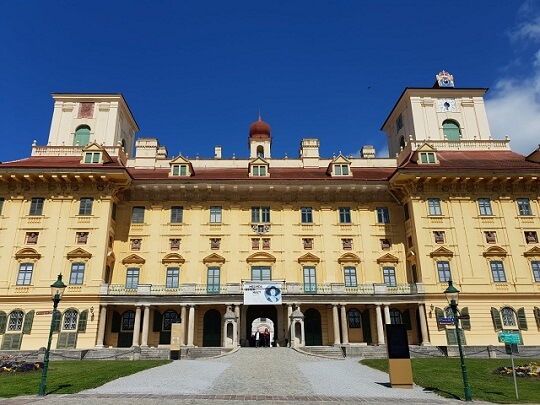
Purchase tickets online for fast-track entry to Esterhazy Palace
Important Rooms of the Palace:
Haydnsaal (Haydn Hall)
This hall is the most impressive of the palace halls. Its size and magnificent beauty are the best evidence of the power and wealth of the Esterhazy family in the past. The hall is named after the famous composer Joseph Haydn, who performed and created for the Esterhazy family for almost 40 years. Today, the hall is used for various concerts.
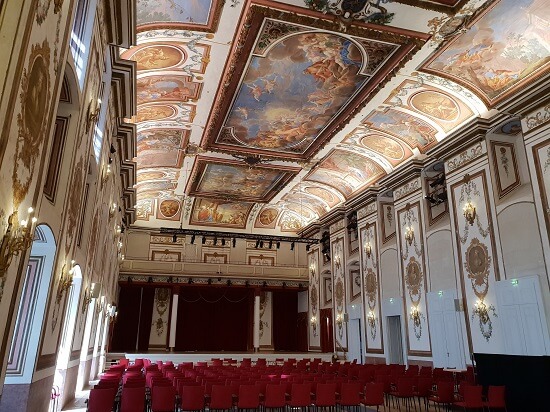
Empiresaal (Empire Hall)
This hall was used for events and parties and is located in the southern part of the palace. The large hall boasts large windows overlooking the palace courtyard, ancient chandeliers, and antique heating stoves from the 19th century.
The Ceremonial Rooms
These rooms were used for official meetings and ceremonies for important figures who came to the palace. They were built and designed at the beginning of the 19th century by the French architect Charles Moreau.
The Small and Large Chinese Salons
With the increase in trade between Europe and the Far East in the 18th century, a trend began among European noble families to design a part of their residence with ancient Chinese objects. The Esterhazy family also did this, and in the mid-18th century, the Large and Small Chinese Salons were established in the palace. These are rooms decorated with various Chinese motifs depicting the lives of the Chinese during the Chinese New Year celebrations. The rooms have remained largely unchanged since the 18th century and are impressively beautiful.
The Hall of Mirrors
This hall is located opposite the Haydn Hall and was formerly used as the palace’s reception hall. The balcony at the front of the hall allows for a wonderful panoramic view of the palace square, the royal stables, and even as far as the large Lake Neusiedl.
The Palace Chapel
This room is designed in the Baroque style and contains an ancient altar as well as an impressive organ from the time of Joseph Haydn.
The Palace Gardens
Surrounding the palace are stunningly beautiful gardens. Some of the gardens were established back in the Middle Ages when the palace served as a fortified castle. After the Esterhazy family took ownership, they expanded and renovated the building and, of course, the surrounding gardens. At the beginning of the 19th century, the area of the palace gardens was doubled, and they were redesigned in an exceptional way. During this period, they were considered one of the most beautiful royal gardens and included lawns, wooded areas, ponds, and streams. Impressive statues were scattered throughout the garden, and several important garden buildings were constructed. The buildings erected in the garden are the Orangery, the Gloriette (also called the Temple of Mary), and the Leopoldine Temple with its beautiful statue of Princess Leopoldine Esterhazy made of shiny marble.
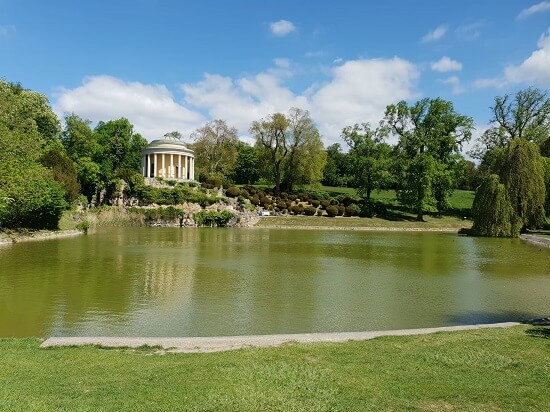
What can you do at Esterhazy Palace?
The palace is undoubtedly the main attraction of the city of Eisenstadt. The palace offers guided tours, exhibitions of the Esterhazy family collections, as well as concerts with artists from around the world. As part of the palace, there is also a wine museum.
Guided Tour of the Palace
The tour of the palace presents the lavish lifestyle and splendor of the Esterhazy family. The tour passes through the living quarters of the Esterhazy women, as well as the palace chapel and, of course, the famous Haydn Hall.
Palace Exhibitions
The palace has exhibitions of the Esterhazy family treasures, including a rare collection of silverware, antique furniture, paintings, and personal items.
In addition, you can visit an exhibition in the palace that deals with the life of Joseph Haydn and his work for the Esterhazy family for about 40 years. This is an interactive exhibition that focuses on the entire life course of the famous composer. Purchase tickets online for fast-track entry to the Haydn exhibition.
Additional Essential Information for Visiting Eisenstadt and Esterhazy Palace
Opening Hours:
- April – May: Tuesday to Sunday and on holidays from 10:00 AM to 5:00 PM.
- June – August: Every day from 10:00 AM to 5:00 PM.
- September – October: Tuesday to Sunday and on holidays from 10:00 AM to 5:00 PM.
- From November through the winter months: Saturday, Sunday, and holidays from 10:00 AM to 5:00 PM.
Entrance Fees:
Without a tour:
- Adult – €19
- Child – €15
With a tour:
- Adult – €24
- Child – €20
Tours take place every day.
If you would like to enjoy a musical concert inspired by Haydn, you can see the list of upcoming concerts here.
Purchase tickets online for fast-track entry to Esterhazy Palace
Address: Esterhazyplatz 1, 7000 Eisenstadt
How to get to Esterhazy Palace from Vienna?
From Vienna’s main train station (Wien Hauptbahnhof), there is a train that departs every hour and arrives at the train station in Eisenstadt. To get to Vienna’s train station, you will need to take the U1 red line on the subway and get off at the Südtirolerplatz-Hauptbahnhof station.
When you arrive at the train station in Eisenstadt, you will need to walk for about 20 minutes to the palace.
You can plan your route on the train website.
Map:
After a visit to the city of Eisenstadt, you can continue for a trip around the large Lake Neusiedl. This is a large nature reserve with a variety of special birds and opportunities for swimming and recreation on the lake. Read more information about Lake Neusiedl.
If you want to rest and relax a bit, you can end the day at the St. Martins Spa, which is located in this area.




